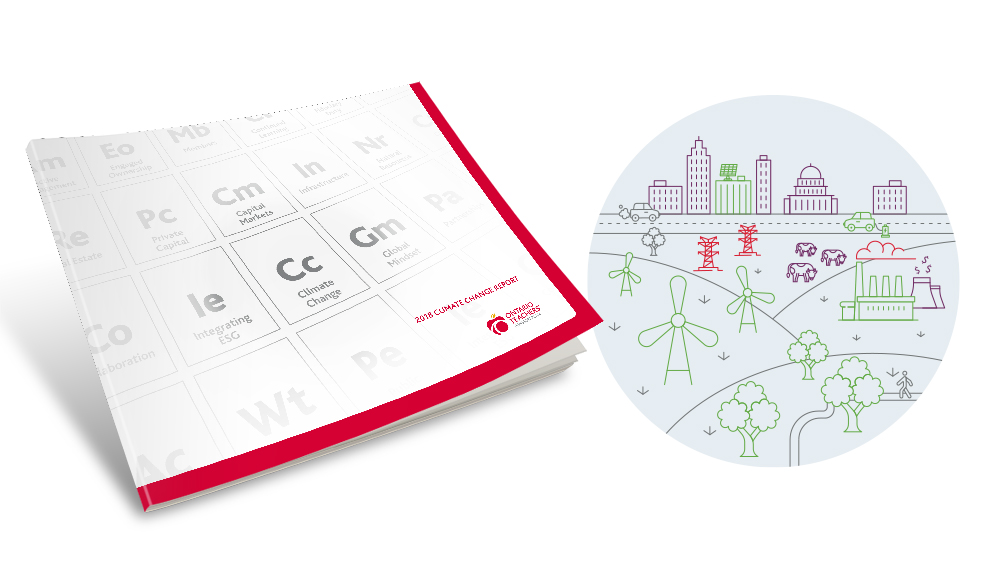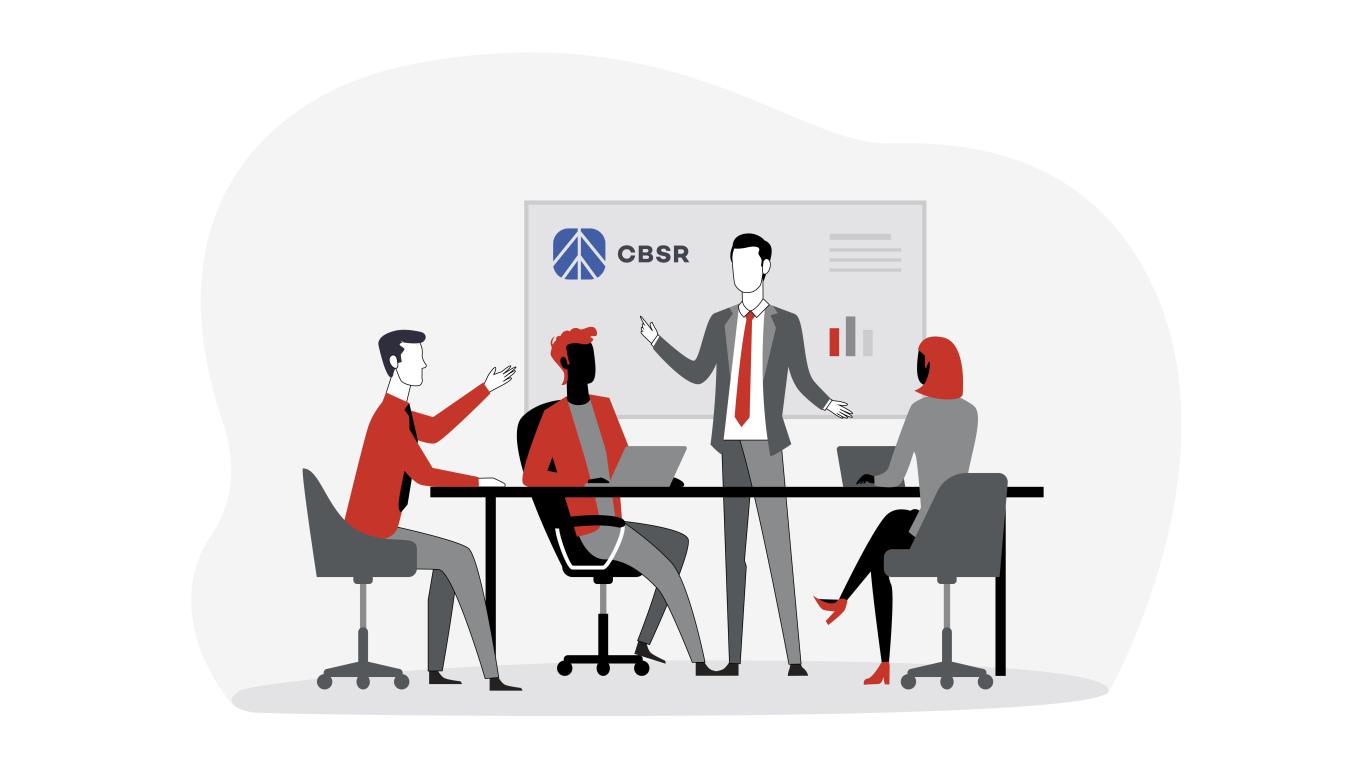Interview: How ESG Factors Into Responsible Investing at Ontario Teachers’

The Ontario Teachers’ Pension Plan (Ontario Teachers’) considers a broad range of factors when investing, including the risks associated with environmental, social and governance (ESG) issues. Here, our Director of Sustainability, Wesley Gee, recently interviewed Deborah Ng, Director, Strategy & Risk and Head of Responsible Investing, and Tomas Dauden, Principal for Responsible Investing, on Ontario Teachers’ approach to evaluating investments within the ESG context and their take on climate change risk as it relates to the investment lifecycle.
Wesley Gee: How does Ontario Teachers’ evaluate its current and potential investments in the context of ESG and what are some of its expectations of companies with regards to ESG disclosure?
Deborah Ng: At Ontario Teachers’, the Responsible Investment (RI) team develops the Plan’s ESG strategy, works across investment teams to develop ESG integration frameworks, tools, and resources, as well as keeping the Plan abreast of what’s happening from an ESG perspective.
Evaluating ESG risks in our investments starts with the identification of the ESG factors that are most important in driving risk and return. Next, we consider the company’s governance of ESG factors, such as level of oversight and policies and procedures in place. Finally, we evaluate the company’s historical performance on ESG KPIs, which provides some validation of the effectiveness of the company’s processes and can uncover areas for further assessment.
From a public company perspective, we are increasingly looking at a company’s disclosure such as the Proxy Statement, MD&A, and Management Information Circular for information on the company’s ESG governance, policies, procedures and KPI performance. There’s less of a reliance on the sustainability report for ESG information, as the sustainability report is typically designed for a different audience, is often based less on financial materiality and more on stakeholder priorities. Importantly it doesn’t provide the link to board governance and strategy.
Wesley: What are some things that help you judge whether the company is displaying ESG governance in the same way they are managing other elements of their business?
Tomas Dauden: As noted above, we look for presence in the company’s mainstream corporate reporting. We look at a few things such as whether there are any committees at the board level and information related to the management of material ESG issues, and the policies the company has in place. Knowing what commitments are out there, and how it links to the business strategy is an important piece of the puzzle.
Wesley: What are some of your preferred sustainability / ESG reporting frameworks, and why?
Deborah: Companies have to recognize that different stakeholders look at different reports / communication tools for obtaining key information that is relevant for them. Lately, however, more investors are looking to obtain sustainability information within annual reports, whereas customers and other stakeholders are looking at sustainability reports.
The Sustainability Accounting Standards Board (SASB) framework is really helpful since it was created with investors in mind. It makes reporting very comparable and is also very sector focused. Additionally, the Task force on Climate-related Financial Disclosures (TCFD) framework is quite helpful. Even though the TCFD recommendations are focused on climate change risks, its framework of governance, strategy, risk management, and metrics and targets is relevant for broader ESG risks.
From an investor perspective, we would like to see companies disclosing more information on ESG KPI trends and performance, such as providing three-year average results along with some context to explain why the ESG KPIs are improving or worsening.
Downloadable spreadsheets are particularly useful if data is on the website, which analysts can cut and paste into their models. Data from PDF reports can be difficult to extract, so companies could opt to share links to their data tables on their website in an HTML format, which can be handled both by bots and analysts.
Wesley: What are some ways in which Ontario Teachers’ integrates climate change risk and opportunity considerations throughout the investment lifecycle? How is it changing the way Ontario Teachers’ assesses risks and investment decisions?
Tomas: We developed the Low Carbon Economy (LCE) Transition Framework to get a common understanding across the Plan of the different pathways the economy could take as it transitions into a low-carbon economy. This framing guides our thinking about how different geographies, sectors, asset classes, and investments could be impacted under the different pathways. The LCE Transition Framework also identified a set of signposts or forward-looking indicators of which pathway we are trending toward.
Our investment teams use a combination of techniques to integrate climate change risk and opportunities:
- Uncovering climate change opportunities: knowing where the signposts are helps to identify good early-mover opportunities. For example, one signpost is meat consumption, and if that number is declining, vegetable-based proteins are more attractive.
- We also use scenarios and signposts to test our investment theses against a wider range of assumptions. For example, an oil and gas investment may be tested by at different values of electric vehicle adoption rates, battery prices, and carbon policy.
- The LCE Transition Framework also feeds into our asset management and value creation activities. For example, working with water utilities to ensure resilience against drought.
We elaborate on these strategies in our latest Climate Change report.

Ontario Teachers’ believes that it is essential to have accurate and timely information about how climate change impacts the companies they invest in. To encourage good reporting, they publish their own Climate Change Report, which provides detailed information about their approach to managing the risks and opportunities related to climate change. It was written in accordance with recommendations made by the Financial Stability Board’s Task Force on Climate-related Financial Disclosure (TCFD).
Wesley: Do you have any additional advice for reporting companies and/or ESG-focused investors and analysts?
Deborah: We would like to see a stronger incorporation of sustainability into corporate strategy, such as in the CEO Letters and MD&As, as we see this as a signal of more effective management of sustainability risk and opportunities.
One piece of key advice for companies is to make the connection for investors about how ESG links to value for the company and its stakeholders. We see this as a signal that the company is dedicating resources to creating sustainable growth.
Some of the concepts behind the International Integrated Reporting Council (IIRC) framework are useful for companies to understand their purpose and value, and to be able to talk about that in a more holistic way as the expectations for companies are only going to increase with respect to their social responsibility. This doesn’t mean that the company’s next report has to be an IIRC report, but it is good to start on that journey and work towards an IIRC type of integrated reporting model.
Learn more about best practices in sustainability reporting in our latest research on Sustainability Trends and Best Practices – available now.




